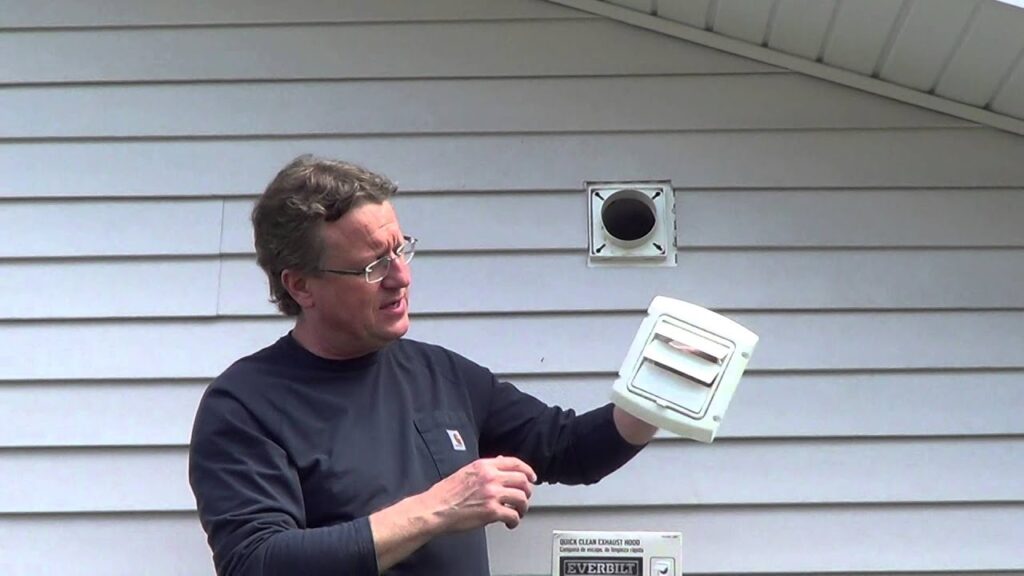
Let’s be honest—dryer vent covers aren’t exactly the kind of thing most of us sit around thinking about. Until, of course, something goes wrong. In sunny, humid Bradenton, where the weather throws in a mix of salt air, rainstorms, and critters with a strong sense of curiosity, having the right dryer vent cover is more important than you might think. Unfortunately, this is exactly where many homeowners trip up. They either pick the wrong type, install it the wrong way, or ignore it completely until there’s a problem.
Before you end up with moldy walls, a bird’s nest blocking your vent, or even worse—an increased fire risk—it’s time to take a closer look at where most people get it wrong with Dryer Vent Cover Replacement.
1. Thinking It’s “Just a Cover”
One of the biggest mistakes people make is underestimating the job. It’s easy to think of a dryer vent cover as a simple piece of plastic or metal that hides a hole. But in reality, it’s your first line of defense against outside elements, moisture, pests, and even fire hazards.
The wrong cover can trap lint instead of letting it escape. It can fall apart under Florida’s intense sun or corrode with salty coastal air. Some people install indoor dryer vents thinking they’re a quick fix, but in Bradenton’s humidity, that’s asking for mold and soggy drywall.
So no, it’s not just a cover. It’s a small but mighty protector for your entire laundry setup.
2. Skipping Regular Checks (Until It’s Too Late)
Another common mistake? Not checking the vent cover regularly. Think about how often you use your dryer. Probably a few times a week, right? That vent is constantly pushing out warm air and lint—and over time, that lint clogs up around the cover.
When it clogs, airflow gets restricted. Your dryer works harder. Clothes take longer to dry. And just like that, your power bill creeps up and your risk of fire increases.
A 5-minute check every few months could save you hundreds in energy costs and repairs. Yet most homeowners wait until the dryer stops working or smells funny before looking outside.
Quote to remember:
“A dryer vent cover isn’t just an accessory—it’s your home’s quiet guardian against heat, moisture, and mischief.”
3. Installing the Wrong Type for Florida’s Climate
Bradenton isn’t like other places. Between the salty air, strong UV rays, and the occasional curious lizard, your vent cover has to be tough and smart. One-size-fits-all doesn’t apply here.
Let’s break it down:
| Cover Type | Great For | Avoid If | Why It Matters in Bradenton |
|---|---|---|---|
| Plastic Flap Cover | Budget-friendly homes | Your dryer runs frequently or gets sun exposure | UV rays can make cheap plastic brittle over time |
| Metal Louvered Cover | Long-lasting in tough conditions | If you never clean it (it can rust if ignored) | Stands up to sun and salt but needs occasional love |
| Pest-Guard Covers | Blocking birds, bugs, and critters | You want low maintenance | Keeps snakes and squirrels from turning it into a hotel |
| Low-profile Sealed Covers | Energy efficiency | If your vent clogs easily | Great at blocking airflow leaks but needs regular cleaning |
The best dryer vent cover for Bradenton homes is usually a rust-resistant metal one with a pest guard. But again—it depends on your setup and how often you’re cleaning it.
4. DIY Gone Wrong (Sorry, But It Happens)
We get it. You want to save money. You figure it’s just a couple of screws and some caulk, right? Unfortunately, a bad DIY job can cost more in the long run. We’ve seen it all—backwards installation, gaps in the seal, or worse, people attaching the cover without checking the inside of the vent.
What’s inside your vent matters. If it’s packed with lint, or if the hose is disconnected, then even the best cover won’t help. In some cases, homeowners install the new cover… only to discover six months later that lint has been blowing into their walls the whole time.
It’s not that you can’t DIY. Just make sure you know what you’re doing, check the inside first, and don’t cheap out on the quality of the cover.
Safety First: What You Risk by Doing It Wrong
Messing up your dryer vent cover replacement isn’t just an aesthetic issue—it can be a safety risk. Here’s what’s at stake:
- Fire Hazard: Lint is highly flammable. If it backs up in the vent because the cover doesn’t open properly, your dryer becomes a fire risk.
- Mold & Mildew: In Bradenton’s humid weather, any trapped moisture inside the vent can quickly lead to mold growth.
- Pest Infestations: Rodents, birds, and even snakes have been known to crawl into uncovered or broken vents.
- Energy Waste: Blocked or restricted airflow forces your dryer to work harder and longer, raising your utility bills.
Key Features to Look For in a New Dryer Vent Cover
Here’s a quick cheat sheet when shopping for a new vent cover in Bradenton:
- Rust-resistant materials (stainless steel or UV-rated plastic)
- Tight seal but allows smooth airflow
- Built-in pest guard or mesh screen
- Backdraft damper (prevents outside air from coming in)
- Easy to clean and remove for maintenance
Dryer Vent Cover Replacement Cost in Bradenton
Here’s a rough idea of what you might expect to pay:
| Service or Item | Estimated Cost |
|---|---|
| Basic plastic cover (DIY) | $10–$25 |
| Metal vent cover (DIY) | $25–$50 |
| Professional installation | $100–$200 |
| Full vent cleaning + cover replacement | $150–$300 |
FAQs
Q: How often should I replace my dryer vent cover in Bradenton?
A: Every 3–5 years, or sooner if it’s cracked, warped, or letting in pests.
Q: Can I just clean the vent cover instead of replacing it?
A: You can clean it, but if it’s brittle or not sealing properly, it’s better to replace it.
Q: What kind of cover is best for keeping out animals?
A: Look for covers with built-in pest guards or metal mesh screens.
Q: Is it safe to cover the dryer vent from the inside instead?
A: No! Your dryer vent must release hot air and moisture outside your home. Blocking it indoors is dangerous.
Conclusion: Don’t Overlook the Little Things
A dryer vent cover might seem like a small detail, but in a place like Bradenton, overlooking it can lead to bigger problems than you’d expect. Whether it’s a critter crawling in or moisture building up behind your walls, that little cover plays a big role in keeping your home safe, clean, and efficient.
If yours is broken, loose, or older than your dryer itself, it’s probably time for a Dryer Vent Cover Replacement—done the right way.
Read more: Bradenton Dryer Vent Cleaning


